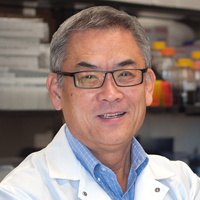Medical coverage of the 29th “Tour du Faso”
Published on: 7th May, 2019
OCLC Number/Unique Identifier: 8163873543
Purpose: Medical coverage of the 29th “Tour du Faso” primarily aimed to report the experience of the medical coverage of the 2016 International Cycling Tour of Burkina Faso.
Methods: This is a prospective study of the medical coverage of the 2016 International Cycling Tour of Burkina Faso.
Results: During the 12 days of medical coverage, 216 consultations were recorded. The complaints were diversified. From simple asthenia to severe malaria. There were cases of indigestion, gastroenteritis and food allergies.
Conclusion: The medical coverage of a cycling competition requires knowledge of the discipline, expertise in sport and emergency medicine.
The outcome of Acute Kidney Injury in patients with severe Malaria
Published on: 8th November, 2017
OCLC Number/Unique Identifier: 7317600169
Background: Acute kidney injury (AKI) is a frequent and serious clinical complication in patients with severe malaria. The purpose of this study was to assess the incidence of AKI in a large population of hospitalized patients with a primary admission diagnosis of malaria, and to investigate the robustness of the KDIGO criteria for predicting the need for dialysis, length of hospital stay and hospital mortality.
Results: We studied 695 consecutive patients admitted with primary diagnoses of malaria, in a 6 months period. AKI occurred in 86 (12.4%) patients (Stage 1 in 30.2%, Stage 2 in 23.3% and Stage 3 in 46.5%), and 19 (22.1%) patients required hemodialysis. No patient in the no-AKI or AKI Stage 1 groups (admission or maximum AKI Stage) required hemodialysis, and the requirement of hemodialysis was higher in patients with AKI Stage 2 (23.1%) and Stage 3 (42.4%). The length of hospital stay was longer (7.3±7.4 days vs 5.1±3.0 days; t=4.996, p<0.0001), and mortality was higher in patients who developed AKI than in those who did not (22,5% vs 2,5%; χ2=79.52; p<0.0001). Patients with AKI Stage 1, 2 and 3 had significantly higher hospital mortality (11%, 23% and 30%, respectively), compared with 2.5% for patients without AKI [odds ratio 5.2 (1.40-19.11, p=0.0331), 13.2 (4.24-41.06, p=0.0002), and 16.9 (7.26-36.65, p<0.0001)], respectively.
Conclusion: In a relatively large cohort of patients with falciparum malaria infection, the KDIGO criteria identified 12.4% with a diagnosis of AKI. The KDIGO classification was robust in this population for predicting the need for dialysis, length of hospital stay and hospital mortality. The results support the utilization of the KDIGO criteria in diagnosis and to predicting outcomes for patients with malarial AKI.
The practice of self-medication in children by their mothers in Lubumbashi, Democratic Republic of Congo
Published on: 17th July, 2020
OCLC Number/Unique Identifier: 8658074907
Self-medication is a common practice in Democratic Republic of Congo (DRC). There are few studies on mothers’ practice of self-medication in children in DRC. Trying to draw an inventory of this practice, we carried out a survey of self-medication of children under 12 years of age by their mothers (n = 392) in Lubumbashi, DRC. The main objective was to assess frequency of self-medication and the secondary purposes were to describe habits, dangerous behaviors and common mistakes. The results speak for themselves: 96% of the mothers self-medicate their children; 95.7% do not know the exact dosage of the drug used; 97.17% do not check the expiry date; over 91% of the mothers use antimalarials, 41.3% antipyretics/analgesics and 26.3% antibiotics. Healthcare practitioners should involve household members in focused awareness on self-medication and its negative implications in order to encourage them to serve as change agents against the practice by mothers.
Artemisia Naphta: A novel oil extract for sensitive and acne prone skin
Published on: 15th June, 2021
OCLC Number/Unique Identifier: 9124793207
Background: The plant Artemisia annua has been used in traditional Chinese medicine for many years. Rich in bioactive molecules, the A. annua plant is used to extract the anti-malaria compound artemisinin (< 1%), which results in most of the plant being unutilized. One byproduct of artemisinin extraction is artemisia naphtha (AN), which has yet to be studied extensively.
Aims: Study the activity of a novel AN oil extract against microbes, pro-inflammatory cytokines, and dermatological endpoints that are key for eczema and acne pathogenesis to determine if an effective A. annua extract for these skin conditions can be developed.
Methods: Gas chromatography-mass spectrometry was performed to determine the composition of AN oil. P. acnes, S. aureus, M. furfur, and C. albicans were cultured to determine minimal inhibitory concentration. in vitro studies utilizing keratinocytes and macrophages were treated with AN oil and gene expression measured by quantitative RT-PCR. A 13-subject clinical trial was performed with 1% AN oil Gel to assess its potential benefits for sensitive and acne prone skin.
Results: AN oil upregulates filaggrin gene expression and possesses antimicrobial and anti-inflammatory activity inhibiting LPS, S. aureus and "Th2 induced" pro-inflammatory mediator release (IL-6, IL-8 and TSLP). Clinical assessment of 1% AN Gel shows it reduces acne blemishes and the appearance of redness.
Conclusion: Previously an underutilized and unpurified byproduct, AN is now the source to develop the first topical AN oil for cosmetic use with an activity profile that suggests it is effective for those with sensitive and/or acne prone skin.
Hazardous Effects of Malaria for Patients Residing in Low-probability Malaria Areas: A Case Report and Critiques of the Literature for Cerebral Malaria
Published on: 13th September, 2023
Despite decades of global and country commitments towards eradicating malaria, malaria remains the most hazardous parasitic disease and the most common cause of fever for humans, especially in tropical countries. Plasmodium falciparum causes 90% of malaria cases. Coma [Cerebral Malaria (CM)], acidosis, hypoglycemia, severe anemia, renal dysfunction, and pulmonary edema are the most common complications of malaria caused by Plasmodium falciparum and the most common cause of death related to malaria. People from less prevalent malaria areas are at high risk of developing these complications. A 16-year-old male from a low malaria transmission area was diagnosed with CM. Prior to developing CM, he was treated with Coartem. CM is a medical emergency and one of the forms of severe malaria. CM has high mortality and morbidity rates. Yet, international health-related agencies, funders, and policy-makers are unfamiliar with it. The continuous occurrence of CM validates the considerable need for global investment in malaria control and elimination programs. Early administration of Artesunate to all patients suspected of having severe malaria would reduce global malaria-related mortality and morbidity. Simple tests, such as the determination of malaria parasitic density either with thin or thick blood smears, may influence the proper management of all severe malaria cases. However, in clinical practice, the determination of malaria parasitic density is not routinely done. Further commitments are needed to ensure routine determination of malaria parasitic density for all suspected severe malaria cases. Moreover, further commitments are needed to guarantee the proper management of CM because it is a major cause of reversible encephalopathy in tropical countries.
Update on the Use of Mesenchymal Stem Cells in the Treatment of Various Infectious Diseases Including COVID-19 Infection
Published on: 5th December, 2023
Mesenchymal Stem Cells (MSCs) have antimicrobial, anti-inflammatory, immunomodulatory, and regenerative potentials. Additionally, utilization of MSCs in the clinical arena has been shown to be safe and well tolerated. Hence, this form of cellular therapy has gained particular attention in the treatment of several infectious disorders and their complications. MSCs have been successfully used in the treatment of the following infections and their complications: bacterial infections including complicated sepsis; viral infections including Human Immunodeficiency Virus (HIV), hepatitis B and C viruses, and Coronavirus disease (COVID-19) complicated by acute respiratory distress syndrome; parasitic infections including schistosomiasis, malaria, and Chagas disease; and mycobacterial infections including tuberculosis. The use of MSCs derived from certain sources and Extracellular Vesicles (ECVs) derived from MSCs has improved their efficacy and reduced their side effects. However, the clinical application of MSCs in the treatment of several infectious diseases still faces real challenges that need to be resolved. The current status of MSCs and the controversies related to their utilization in various infections will be thoroughly discussed in this review.
Assessment of Indigenous Knowledge on Using of Traditional Medicinal Plants to Cure Human Diseases in South Omo Zone Baka Dawla Ari District, Kure and Bitsmal South Ethiopia
Published on: 30th May, 2024
This ethnobotanical study aims to investigate and document the indigenous knowledge on using traditional medicinal plants to cure human diseases in southern Ethiopia, south Omo zone Baka dawla Ari district at Kure and Bitsmal community. In this study, 77 plant species that belong to 68 genera and 35 plant families were identified by 110 local community members and 10 traditional healers of the study area to treat 32 human diseases. According to the analyzed result of the study three families (Lamiaceae, Solanaceae, and Fabaceae) are equally leading families each with nine species (11.69%) followed by Euphorbiaceae with five species (6.5%) and Asteraceae with four species (5.2%) in the study area. The result of this study also shows that most of the traditional medicines were taken in the mouth (oral) at 61.5% followed by topical (26,4%) and inhalation form (12.1%). The findings of this study show that most traditional plants were collected from the forest (45.5%) followed by the backyard (26%) and herbs are the most popular (59%) followed by shrubs (27%) plant habits. According to the result of this study, leaves are the dominant traditional medicinal plant parts used (55%) followed by roots (11.2%). preference ranking of medicinal plants in the study shows Solanum incanum ranked first indicating that it was the most effective in curing stomach pain followed by Verbena officinalis and the highest informant consensus factor value (0.57) was recorded by Malaria, Evil eye, snake bite, sudden disease categories.
















